Time for a cuppa: Eight things you didn't know about tea
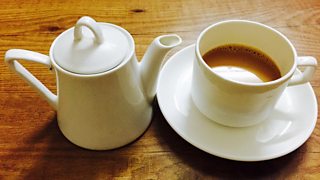
Hardened coffee drinker Dan Saladino has been investigating tea's past and has found out how our preference for the leaf has changed over three centuries.
From camels to the afterlife, we've pulled together eight fascinating Food Programme facts about tea that even the most devoted enthusiast won't know about.
1. Some people tried to put tea leaves on toast with butter
Tea was first retailed in London by a man called Thomas Garraway in 1657 at number 30 Corn Hill in the Square Mile at the centre of the city. This was the site where the British had their first taste of tea. It was a luxury product that not everyone could afford. Enormously desirable and a sure sign of sophistication though not everyone knew what to do with it. There are sources that show people trying to soak the leaves and eat them or put them on toast with butter.
2. The earliest evidence of tea consumption is from 200 BC
In the Yang Ling mausoleum in central China, offerings found in ancient burial tombs included dried cakes of leafy material. The presence of caffeine and theanine in the leaves proved that these were in fact tea which was buried with the dead to take them into the afterlife. This pushes back the date of first proved tea consumption by about 200 years.
3. All tea comes from one plant species
All tea comes from Camellia Sinensis. Differences between teas are down to variation in cultivars of the plant, growing conditions and production process.
4. Legendary tea hunter Robert Fortune
In the 17th century a breakdown in diplomatic and trade relations with China ceased trade and the British had to look for tea supply elsewhere. The East India Company which largely controlled global trade hired the legendary tea hunter Robert Fortune. He collected plants from around the world and sold them to the aristocracy. They employed him to go undercover to China to smuggle tea plants into India and set up a parallel industry there. Surprisingly he succeeded in exporting 20,000 plants and seedlings from China to Darjeeling… only to find that the tea plant was growing wild there in the first instance. It was as a direct result of Robert Fortune’s undercover activities that India became the home of tea in the way it did.
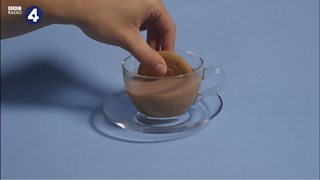
The perfect formula for a cup of tea is a lot more complicated than you think. Watch our guide on how to make the perfect cup of tea to ensure you never make a sub-standard brew ever again.
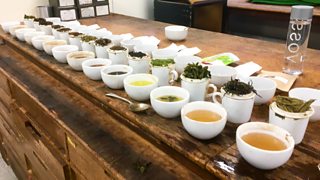
When you taste different teas you want to be paying attention to their aroma, flavour, appearance and mouth feel. Slurping is a good way of getting a quick burst of flavours.
5. Why do we have milk in tea?
India’s entry into our tea story in the 17th century shaped the way our tastes developed and you can see the impact of these early changes in the way that we consume tea today. The plant that really flourished in India was a subspecies of the tea plant called Camellia Sinensis Assamica. Assam tea tasted better black than green – the oxidation which blackens the leaf eliminated floral notes and added darker, stronger, maltier ones. Typically, early English Breakfast blends containing Assam tea were strong and full bodied which prompted people to add milk. Today, a typical English Breakfast blend of tea in the UK will still be drunk with milk. In contrast, on the continent you rarely see tea served with milk. While we were buying tea from India, the Netherlands were taking tea from Indonesia which were much milder and didn’t need milk. They will have spread that tea across the rest of Europe, to France, Spain and Germany.
6. London once controlled 85% of the global tea trade
For a long time The City of London was at the centre of the tea trade, in the 1800s 85% of all global trade was controlled by the City of London. Through most of the 20th century, tea auctions were taking place sometimes three times a week, even between the two world wars. Tea brokers in London were bidding on teas from all corners of the world from almost every producer in contrast to tea auctions in Calcutta for example which only saw Indian teas.
7. Russian Caravan tea
Russians received most of their tea across the caravan routes from China. The camel caravans would travel for months and months carrying tea across continents. The smoke from their nightly campfires penetrated the tea and by the time they reached Moscow or St Petersburg the leaves had acquired a smoky taste which remains a feature of what we call Russian Caravan tea today.
8. The demise of the tea trade
By the 1990s a number of factors lead to the demise of London’s tea trade. Containerisation and the rise of big brands as well as supermarkets and the decline of grocers meant that tea was no longer sent to London. Trade became limited to private treatise between major plantation owners with tea gardens around the world and a small handful of tea packers in the UK. The result was the devaluation of tea to the point where the price of tea no longer reflects the production or supply processes involved.
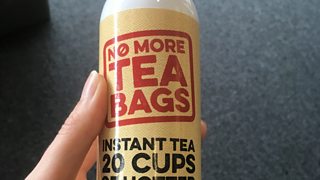
Would you drink tea sprayed from a can? A high-end tea producer is hoping so. The notion produced howls of anguish on social media, but they haven't tasted it yet - Winifred Robinson has.
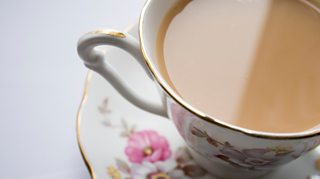
It matters what you drink your tea in. Tea in a fine bone china cup will taste infinitely better than a cardboard takeaway container.
More from Radio 4 in Four
-
![]()
Tea: A Coffee Drinker's Guide
Hardened coffee drinker Dan Saladino investigates tea's past, present and future.
-
![]()
Do we pay enough for tea?
Dan Saladino continues his look at our love affair with the leaf.
-
![]()
Zest for life: Nine citrus secrets
All you ever needed to know about citrus. And a little squeeze extra.
-
![]()
How to liven up your lunchtime
Break out of the lunchtime automatic pilot and eat something that tastes good!



